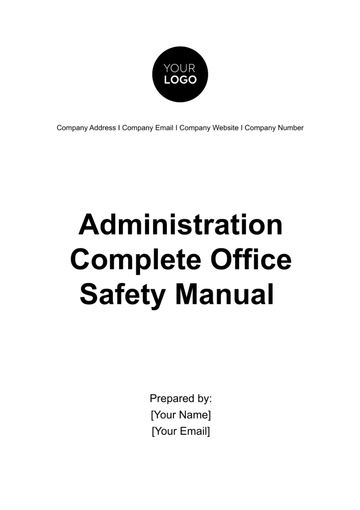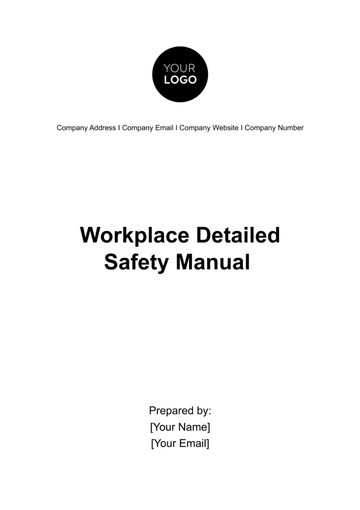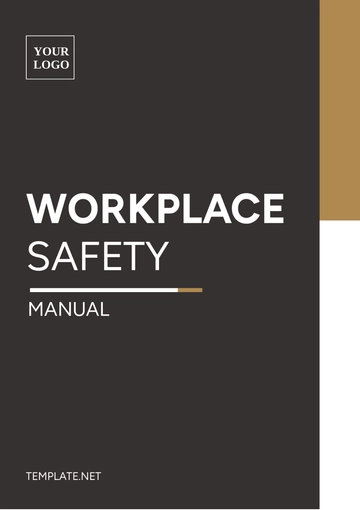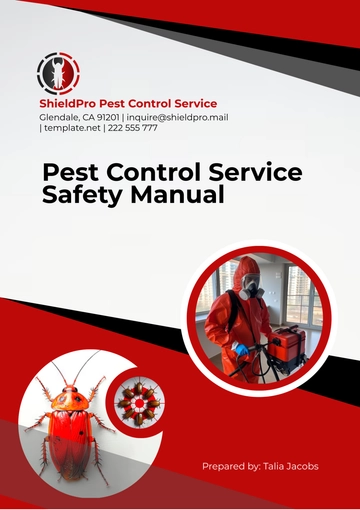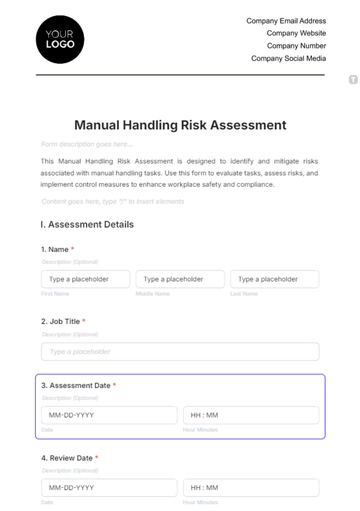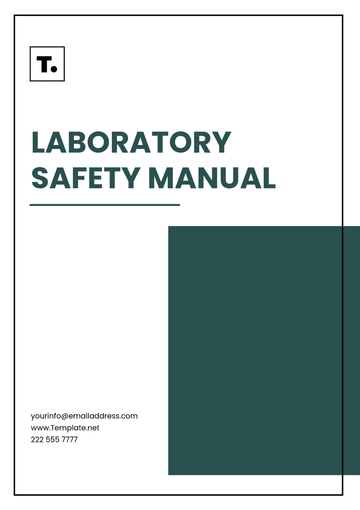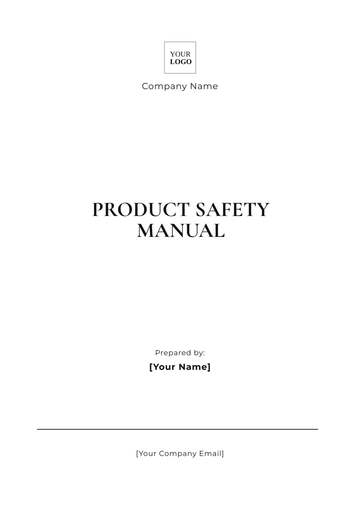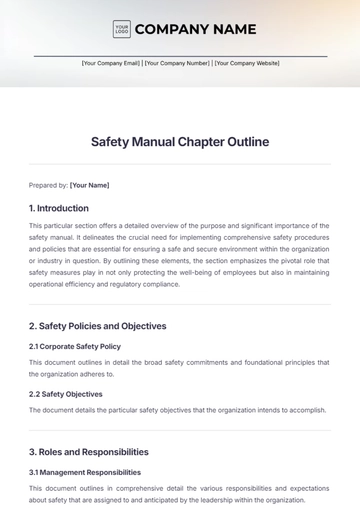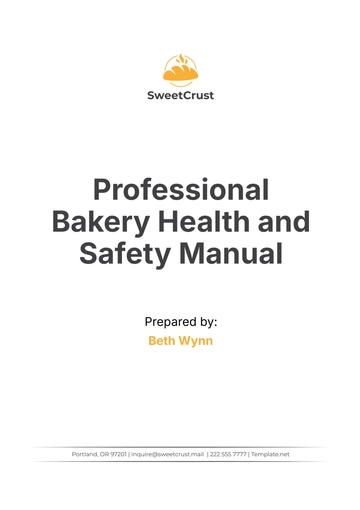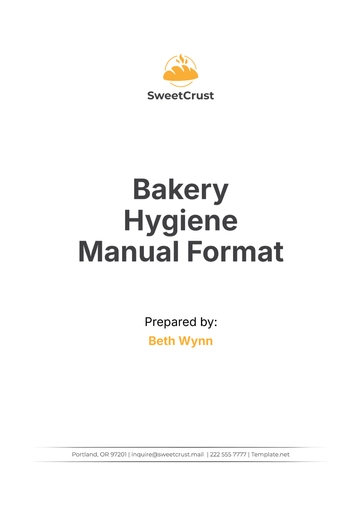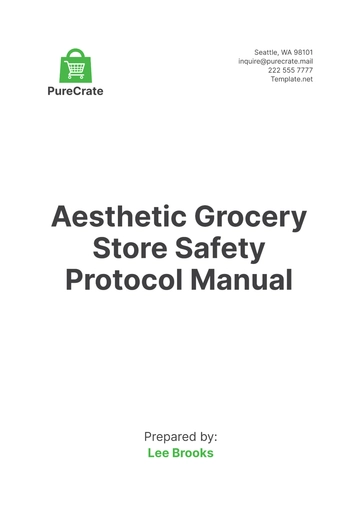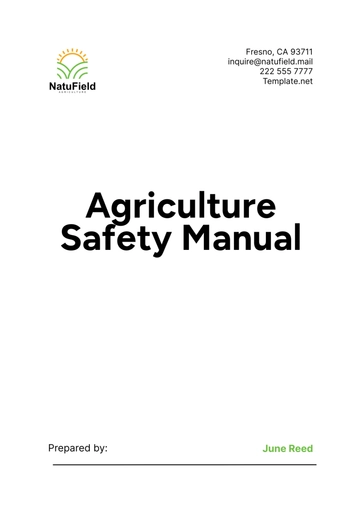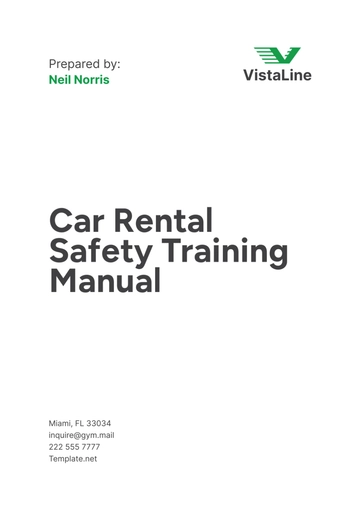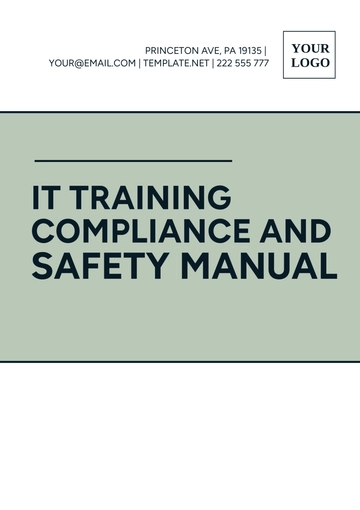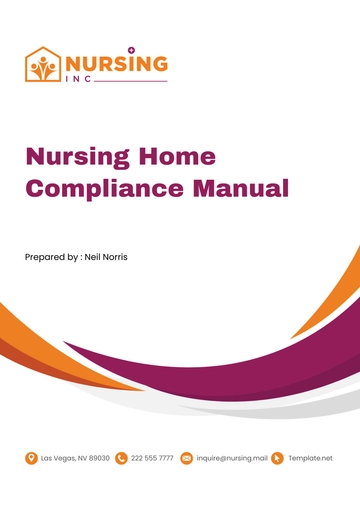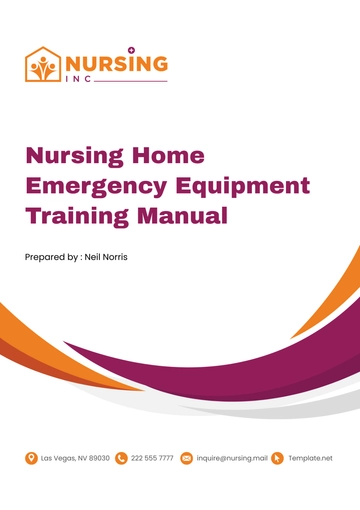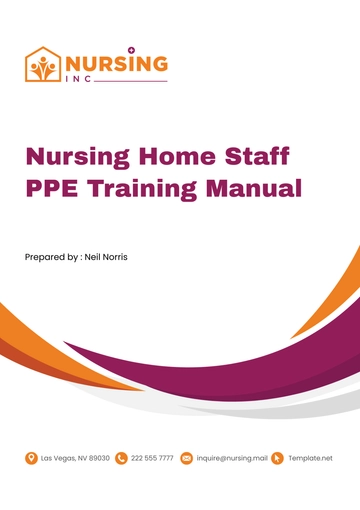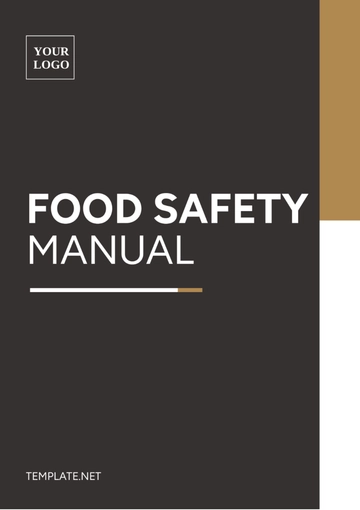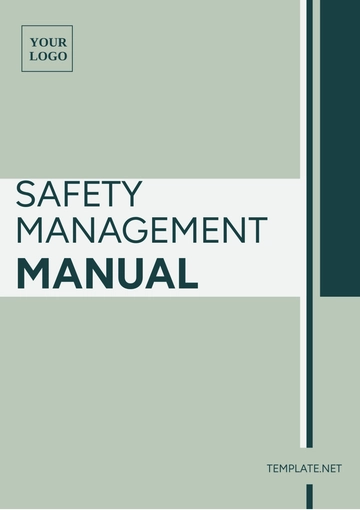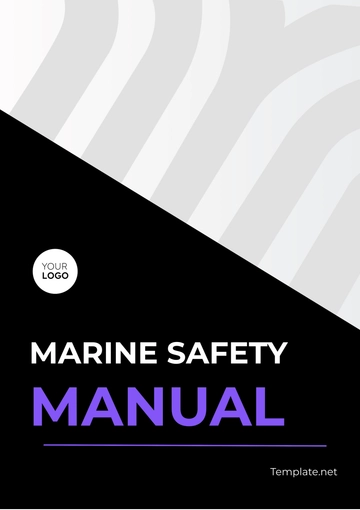Free Health & Safety Training Legal Manual
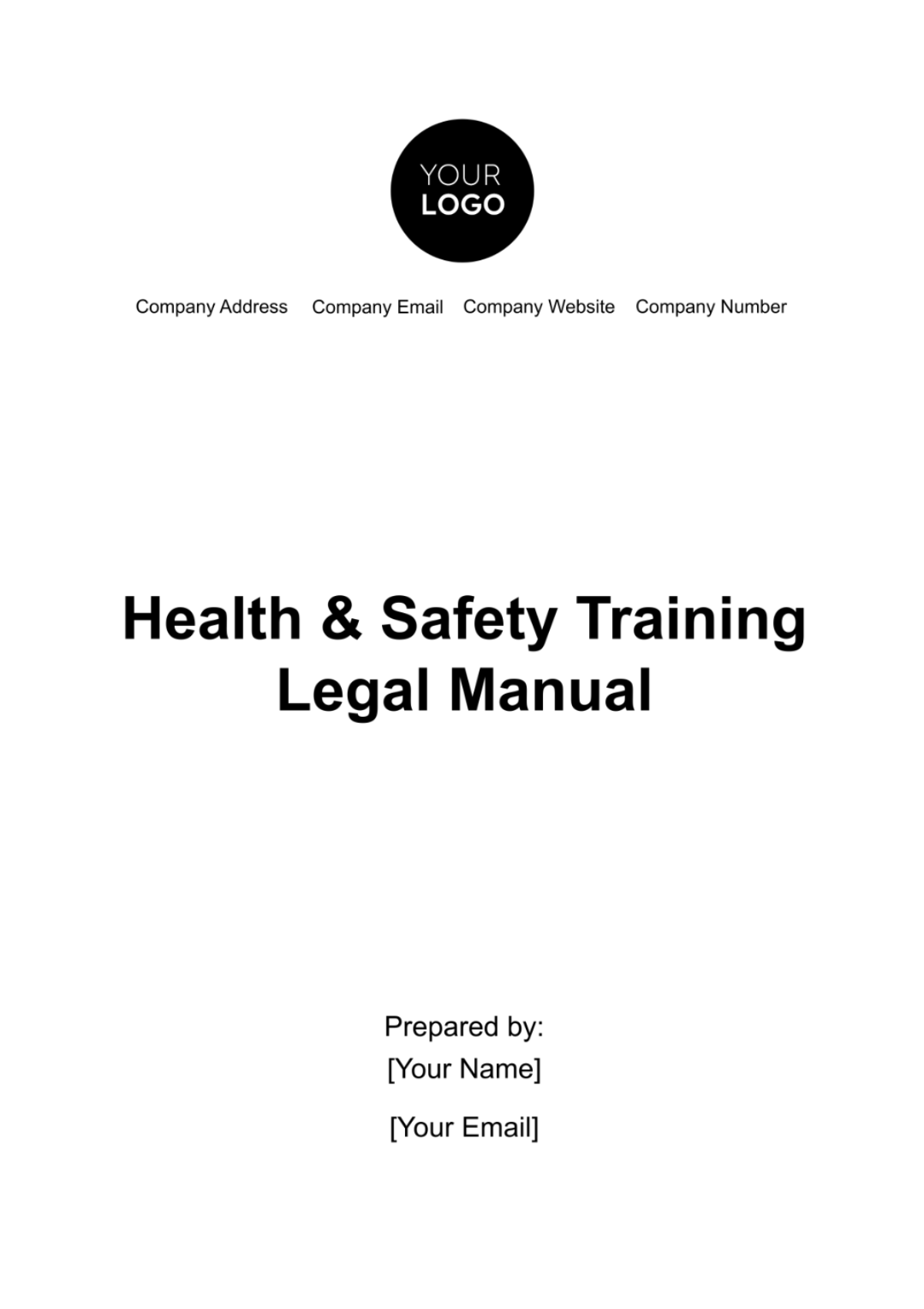
I. Introduction
A. Purpose of the Manual
This Health & Safety Training Legal Manual serves as a comprehensive guide for employees and management to understand and comply with health and safety training requirements. It outlines legal obligations, defines responsibilities, and provides guidance on developing and implementing effective training programs.
B. Legal Compliance Statement
[Your Company Name] is committed to complying with all relevant health and safety laws and regulations applicable to its operations. This manual is designed to ensure adherence to these legal requirements and to promote a safe and healthy work environment.
II. Legal Framework
A. Overview of Health and Safety Laws and Regulations
[Your Company Name] operates within the jurisdiction of [Relevant Jurisdiction], where adherence to health and safety laws is paramount. This section provides a detailed overview of key legislative acts and regulatory frameworks, including the [List specific laws and regulations]. It outlines the purpose and scope of each regulation, emphasizing the organization's commitment to full compliance.
B. Applicable Jurisdiction(s)
To ensure clarity, this section elaborates on the geographical scope of the laws covered in this manual. It specifies any regional or local variations in legislation, helping employees understand the specific legal context within which the organization operates.
III. Responsibilities and Roles
A. Management's Role in Health and Safety
Emphasizing the critical role of organizational leadership, this section provides a comprehensive breakdown of management responsibilities. It covers leadership's commitment to fostering a safety culture, allocating resources for training initiatives, and actively participating in ongoing safety programs.
B. Responsibilities of Safety and Health Professionals
In detailing the responsibilities of safety and health professionals, this section outlines their role in identifying potential hazards, conducting thorough risk assessments, and proactively addressing safety concerns. It emphasizes their collaboration with management to establish effective training programs.
C. Employee Responsibilities
To enhance employee engagement, this section outlines specific responsibilities expected from every employee. It includes active participation in training sessions, reporting hazards promptly, and following established safety protocols. It emphasizes the shared responsibility for creating a safe working environment.
IV. Training Requirements
A. Identification of Training Needs
This section provides a systematic approach to identifying training needs. It outlines the criteria for determining which employees require specific training based on their roles, tasks, and potential exposure to hazards. It encourages proactive identification of training gaps.
B. Overview of Mandatory Training Programs
In this expanded section, mandatory training programs are intricately described. Each program, including emergency procedures, hazard communication, first aid, and fire safety, is explained in detail. The rationale behind each requirement is highlighted, reinforcing the importance of comprehensive training.
C. Frequency and Duration of Training
To provide practical guidance, this section specifies the recommended frequency and duration for each training program. It factors in regulatory requirements, industry best practices, and the organization's unique considerations to ensure effective and ongoing training.
V. Training Program Development
A. Program Design and Content
This section delves into the intricacies of program design, emphasizing the need for engaging and informative content. It provides guidance on aligning training content with specific job roles, incorporating real-life scenarios, and ensuring relevance to the organization's operational context.
B. Training Methods and Resources
A detailed exploration of various training methods is provided, catering to diverse learning styles. This section outlines the advantages and considerations for classroom sessions, hands-on exercises, e-learning modules, and other approaches. It emphasizes the importance of utilizing a variety of resources to enhance training effectiveness.
C. Evaluation and Assessment
To ensure continuous improvement, this section discusses methods for evaluating and assessing the effectiveness of training programs. It emphasizes the importance of feedback loops, assessments, and post-training evaluations to gauge comprehension and identify areas for improvement.
VI. Documentation and Recordkeeping
A. Recordkeeping Requirements
This section offers a detailed breakdown of recordkeeping requirements, specifying the types of records to be maintained. It underscores the importance of accurate and detailed documentation in demonstrating compliance during regulatory audits.
B. Types of Documentation
To enhance clarity, this section elaborates on the specific types of documentation, including attendance records, certifications, and training evaluations. It provides examples and templates to streamline the recordkeeping process.
C. Retention Periods
Clear guidance is provided on the retention periods for different types of training documentation. It outlines the organization's commitment to maintaining historical records and the rationale behind specified retention periods.
VII. Training Delivery and Implementation
A. Scheduling and Coordination of Training Sessions
This section provides a step-by-step guide for scheduling and coordinating training sessions. It emphasizes the importance of collaboration with relevant departments, proactive communication, and ensuring optimal participation.
B. Communication Strategies
In an expanded section, communication strategies are detailed comprehensively. It covers communication channels, methods, and tools for informing employees about upcoming training sessions, changes to training programs, and emergency procedures.
C. Accessibility and Accommodations
To promote inclusivity, this section addresses accessibility concerns. It provides guidance on making training materials accessible and outlines procedures for accommodating employees with special needs during training sessions.
VIII. Emergency Procedures Training
A. Evacuation Plans
Detailed evacuation plans are provided, including floor maps indicating emergency exits, assembly points, and evacuation routes. This section emphasizes the importance of regular drills to ensure employees are familiar with emergency procedures.
B. Emergency Response Training
A comprehensive overview of emergency response training is included, covering first aid procedures, emergency contacts, and communication protocols during crisis situations. Practical scenarios and simulations are encouraged to enhance readiness.
C. Communication Protocols during Emergencies
This section provides clear communication protocols for emergencies, including the use of alarm systems, emergency contact information, and procedures for relaying critical information to employees during crises.
IX. Hazard Communication Training
A. Overview of Hazard Communication Standards
A detailed exploration of hazard communication standards is presented, emphasizing the organization's commitment to transparency and compliance. The section provides context for the importance of hazard communication in maintaining a safe workplace.
B. Material Safety Data Sheets (MSDS) and Safety Data Sheets (SDS)
Employees are guided on accessing and interpreting MSDS/SDS for hazardous substances. This section underscores the significance of understanding these sheets to ensure safe handling and use of materials.
C. Labeling Requirements
The importance of proper labeling is highlighted, with detailed information on labeling requirements for hazardous materials. Examples of compliant labels are provided to enhance employee understanding.
X. First Aid and Medical Response Training
A. First Aid Training Programs
This section provides a comprehensive overview of the organization's first aid training programs. It outlines the specific skills covered, such as CPR and AED usage, wound care, and emergency response. The importance of hands-on training and practical scenarios is emphasized to ensure employees are well-prepared to handle medical emergencies.
B. Availability of First Aid Supplies
Detailed information is provided regarding the locations of first aid supplies throughout the organization. The section emphasizes the importance of maintaining fully stocked first aid kits and the responsibility of designated personnel for regular checks and restocking.
C. Reporting and Response Procedures for Injuries and Illnesses
Employees are guided through the reporting and response procedures in the event of injuries or illnesses. This includes reporting mechanisms, immediate first aid actions, and the process for seeking further medical assistance. Clear communication channels and a commitment to prompt reporting are underscored.
XI. Fire Safety Training
A. Fire Prevention Measures
This section delves into specific fire prevention measures, including proper storage of flammable materials, equipment maintenance, and housekeeping practices. The importance of employee vigilance in identifying and reporting potential fire hazards is highlighted.
B. Fire Emergency Procedures
Comprehensive fire emergency procedures are outlined, covering evacuation routes, assembly points, and the use of fire extinguishers. Practical guidance on different types of fires and the appropriate use of fire suppression equipment is provided.
C. Proper Use of Fire Extinguishers
Employees are trained on the types of fire extinguishers available, their locations, and proper usage techniques. Regular inspections and maintenance procedures for fire extinguishers are detailed, reinforcing the organization's commitment to fire safety.
XII. Personal Protective Equipment (PPE) Training
A. Identification of Required PPE
This section details the specific personal protective equipment required for various tasks and work environments. It emphasizes the importance of conducting thorough risk assessments to determine the appropriate PPE for each job role.
B. Proper Use, Maintenance, and Replacement
Employees are guided on the correct usage of PPE, including how to wear and maintain it properly. Procedures for regular inspections, cleaning, and the timely replacement of damaged or worn-out PPE are outlined to ensure continuous protection.
C. Training on Equipment Inspection
A hands-on approach to training is encouraged in this section, emphasizing the importance of employees actively participating in the inspection and maintenance of their PPE. Detailed procedures for reporting defects and obtaining replacements are provided.
XIII. Health and Wellness Programs
A. Promotion of Employee Well-being
The organization's commitment to promoting employee well-being beyond physical safety is highlighted. This section introduces health and wellness initiatives, including programs related to nutrition, stress management, and work-life balance.
B. Health Screenings and Assessments
Details on available health screenings and assessments are provided, emphasizing the organization's proactive approach to identifying and addressing potential health issues among employees.
C. Employee Assistance Programs
Employees are informed about available employee assistance programs, including counseling services and resources for mental health support. The confidentiality and accessibility of these programs are emphasized to encourage utilization.
XIV. Communication and Reporting
A. Reporting Procedures for Hazards and Incidents
Clear and accessible reporting procedures for hazards, near misses, and incidents are outlined. Employees are encouraged to report promptly, and the non-retaliation policy is reinforced to create an open reporting culture.
B. Communication Channels for Safety Concerns
This section details various communication channels employees can use to raise safety concerns, including reporting directly to supervisors, safety committees, or using anonymous reporting mechanisms. The organization's commitment to addressing concerns is reiterated.
C. Whistleblower Protections
Employees are informed about whistleblower protections in place to safeguard individuals who report safety concerns in good faith. This section emphasizes the organization's commitment to protecting employees from retaliation.
XV. Enforcement and Penalties
A. Consequences for Non-Compliance
This section details the consequences for employees and the organization in the event of non-compliance with health and safety training requirements. It includes a graduated disciplinary approach, highlighting corrective actions and opportunities for improvement.
B. Disciplinary Procedures
Clear disciplinary procedures are outlined, emphasizing fairness and consistency in enforcing consequences for non-compliance. This section reinforces the organization's commitment to a safe and compliant workplace.
C. Legal Penalties and Fines
Employees are informed about potential legal penalties and fines the organization may face in the case of serious violations. The section underscores the importance of compliance to mitigate legal risks.
XVI. Updates and Changes
A. Monitoring Changes in Health and Safety Regulations
Guidelines are provided for actively monitoring changes in health and safety regulations. This includes designated personnel responsible for staying informed and promptly updating relevant stakeholders.
B. Procedures for Updating Training Programs
Clear procedures are outlined for updating training programs in response to regulatory changes, emerging risks, or organizational needs. The involvement of relevant stakeholders and the communication of updates are emphasized.
C. Communication of Changes to Employees
Employees are informed about how changes to training programs will be communicated to them. This includes the use of various communication channels, such as company-wide announcements, training sessions, and updated documentation.
XVII. Review and Evaluation
A. Periodic Review of Training Effectiveness
Guidelines for conducting periodic reviews of training effectiveness are detailed. This includes key performance indicators, feedback mechanisms, and the involvement of safety committees in the review process.
B. Feedback Mechanisms
Clear mechanisms for collecting feedback from employees are outlined. This section emphasizes the importance of employee input in identifying strengths, weaknesses, and opportunities for improvement in training programs.
C. Continuous Improvement Initiatives
The organization's commitment to a culture of continuous improvement is reinforced. This section provides practical steps for implementing corrective actions based on feedback, incident reports, and evolving industry best practices.
- 100% Customizable, free editor
- Access 1 Million+ Templates, photo’s & graphics
- Download or share as a template
- Click and replace photos, graphics, text, backgrounds
- Resize, crop, AI write & more
- Access advanced editor
Elevate your workplace safety standards with the Health & Safety Training Legal Manual Template from Template.net. This fully editable and customizable document, powered by our advanced Ai Editor Tool, provides comprehensive guidance for ensuring compliance and minimizing risks. Safeguard your team and business with ease using Template.net's innovative solutions.

